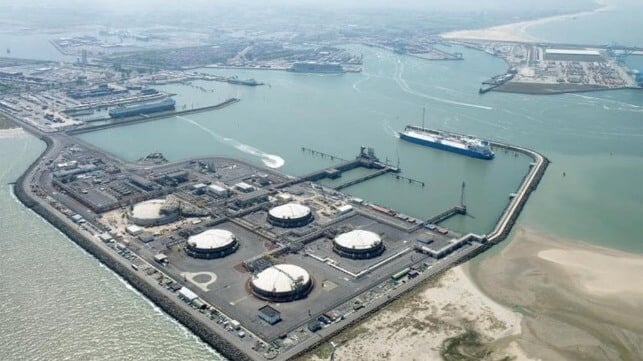Belgium Deploys Unique Sensor to Measure Ship Emissions

The authorities in Belgium this week deployed a new sensor that is designed to enhance the detection of ships violating the emissions control zone in the North Sea as well as enhance data collection to inform future emissions regulations. The program expands on the use of drones and planes which are being used to fly over ships and measure the emissions from the smokestacks.
The program began in 2021 with the Royal Belgium Institute for Space Aeronomy working to create an optical system that could be deployed as a measuring instrument for emissions of SO2, NOX2, and CO2. The concept was to expand enforcement of the emissions regulations imposed in the North Sea region to catch vessels that might be exceeding the limits either through the use of higher sulfur fuels or failing to properly scrub emissions.
The authorities highlight that approximately 200,000 ships pass through the Belgian part of the North Sea each year emitting not only CO2 but many regulated pollutants. In addition to in port inspections, they are using so-called “sniffers” to overfly vessels while underway but it is limited in the amount of measuring that can be achieved and requires personnel to implement.
“The international goal is to get shipping to net zero greenhouse gas emissions by 2050,” said Belgium’s Deputy Prime Minister and North Sea Minister Paul Van Tigchelt. “With new techniques, such as this sensor, we will soon be able to monitor ships to our ports 24/7. This test project in Zeebrugge proves once again that Belgium is leading the way thanks to our innovative companies and top experts in the fight against climate change.”
The concept was to develop an automated system that would measure vessels passing near the sensor. The measurements are fed into a database and the system also seeks to detect violators. The design called for measuring at least 30 ships per day at a distance of up to 10 km (6 miles) from the sensor.
When suspected violations are detected, the authorities are alerted. The plan calls for ordering an overflight to take detailed measurements or to conduct fuel inspections when the vessel reaches port.
The sensor developed by the Institute began testing in 2023 and was recently installed near the traffic control center at the Port of Zeebrugge. Once the system has completed proof of concept, the plan is to deploy it in an offshore wind farm at the southern end of the Belgian North Sea zone to expand the monitoring of shipping traveling into and out of the region.
